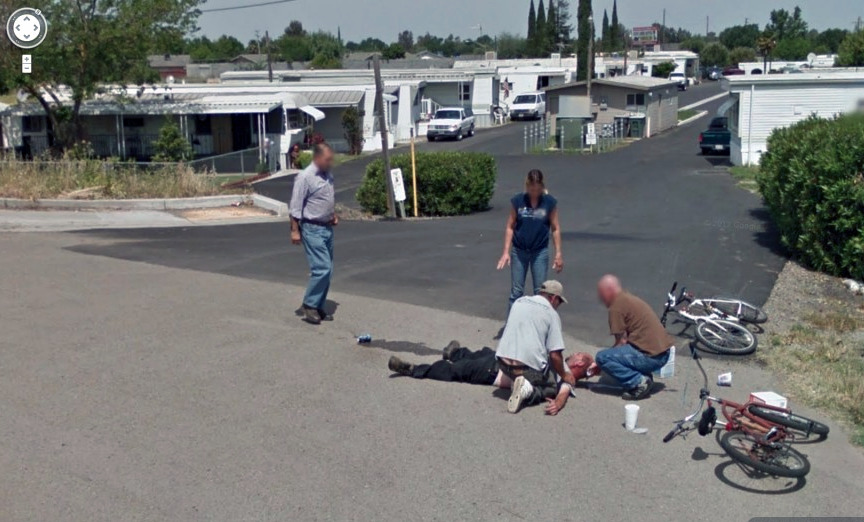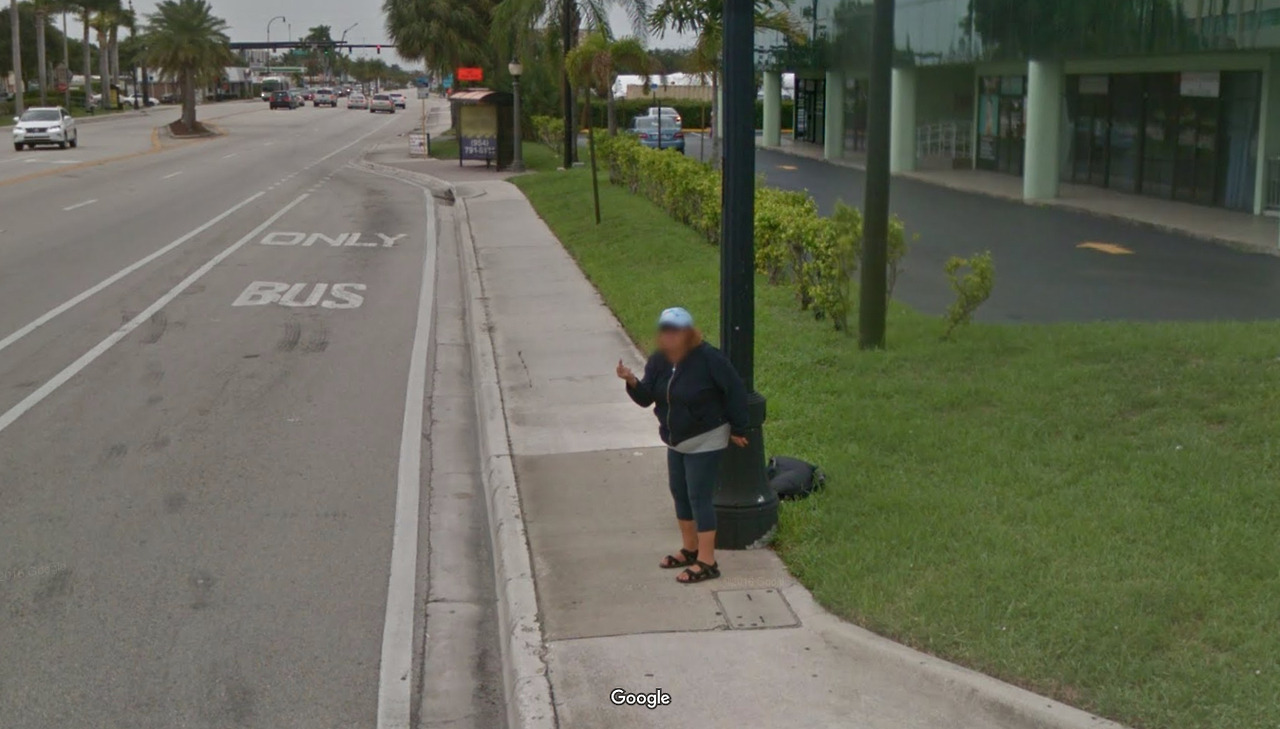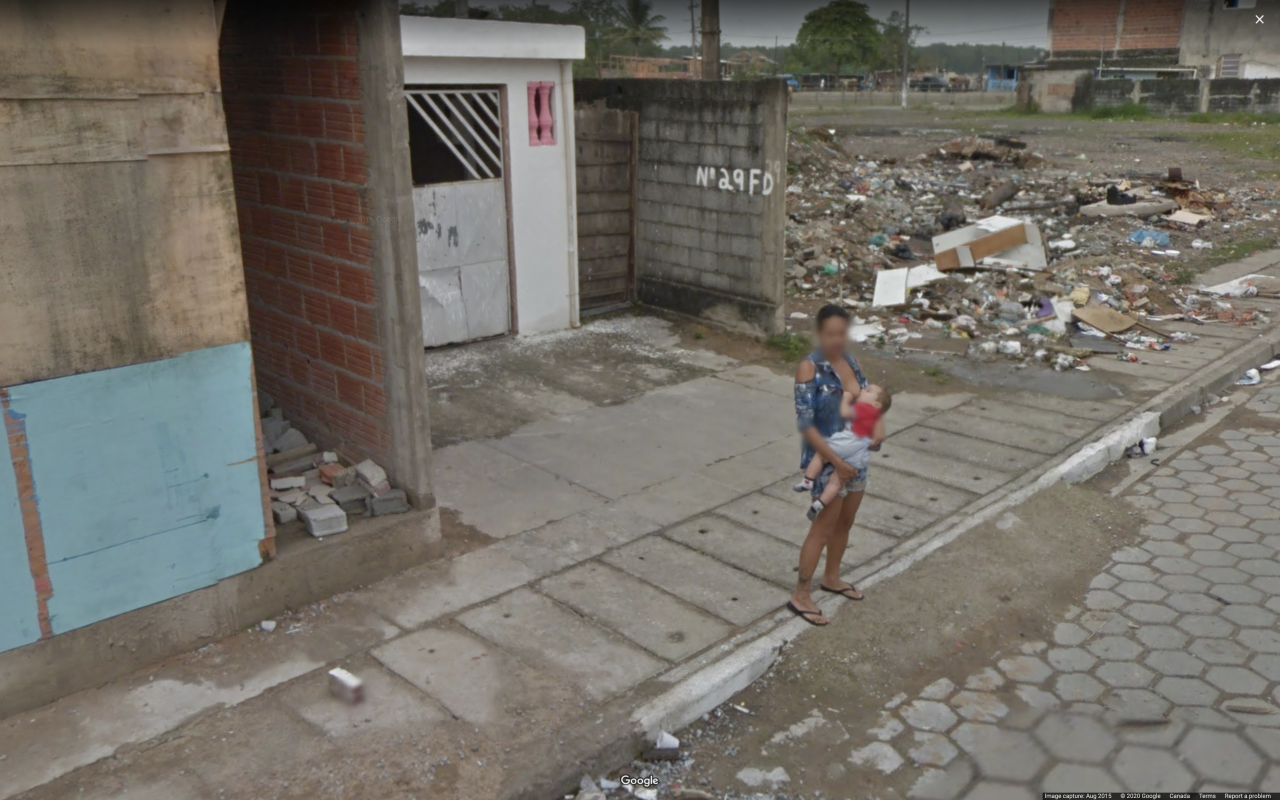Since 2008, Canadian artist Jon Rafman has been collecting screenshots from Google Street View cameras as part of his ongoing project ‘Nine Eyes of Google Street View’.
He began isolating images from Google’s massive database, publishing them on blogs, as PDFs, in books, and as large C-prints for gallery exhibitions.
Named for the initial design of nine cameras on a Google Street View camera, Rafman’s work is not only an impressive archival project, but also a comment on the position of photography in a shifted world of automated imaging making on an industrial scale.

Google Street View was launched as a feature in 2007, and users can drop a pin on almost every street throughout the world and get 360 degree views captured by a fleet of cars outfitted with nine cameras on a tall pole.
Speaking in 2013 with The 6th Floor, part of The New York Times, Rafman said:
“Around 2007 or 2008, when this project started, I was surfing the internet as a daily routine as part of my artistic practice. There was something about all these virtual worlds that had emerged online that really excited me, especially the sheer vastness of Google Street View.
“Never before in history has anyone, or any company, attempted to photograph the entire world from a street-level perspective. I saw myself as a sort of virtual explorer, exploring these new vast virtual landscapes.”
The best camera deals, reviews, product advice, and unmissable photography news, direct to your inbox!

There have been numerous concerns about privacy since the launch of Google Street View, and the photographs Rafman has managed to access included the aftermath of a bad bicycle accident, and a mother breastfeeding her child.
It’s no longer possible to request the removal of an image, only to blur it, which is something Google attempts to do with all faces and number plates (license plates).
Rafman collected an image of an elephant with a blurred face as part of his project.
He said:
“The blurring is done by an algorithm most of the time. It sees a face, two eyes and a mouth — I don’t know how it does it — it’ll blur that. The intimation of face or license plates, it’ll blur it. Of course, it’s going to get things wrong a lot of the time.”
Rafman isn’t the first artist to find inspiration in automated photography.
Finnish artist and photographer Tatu Gustafsson spent one week every month, for four years living in his car, capturing self-portraits on the 700 weather cameras dotted around Finland.

This project has strong ties to the history of street photography, according to Rafman, who would monitor the Google Street View website looking for the location of the camera cars, and therefore the newest photos.
“Revved up on energy drinks,” Rafman would run around after the vehicles all day.
“There’s something inherently exciting knowing that you might be the first person to ever gaze upon a scene that happened in the past. It’s almost like looking at a memory that nobody really had. Photographs are so connected to human memory, but these are photographs of no one’s memories.”
As well as the efficacy of Google Street View, Rafman is also interested in its glitches, including an image of an elderly man walking down the street in France in 2012, with his doppelganger, duplicated, following him down the street.
“That’s my favorite glitch too. I don’t know what happened, but maybe the car stopped for some reason or the camera didn’t take pictures fast enough. Somehow this man who’s clearly moving really slowly was able to move into the second picture that was going to be stitched together with the first one, which very rarely happens.”
Take a look at the best cameras for portraits. We’ve also put together guides to the best dash cameras, and the best camera drones on the market.






